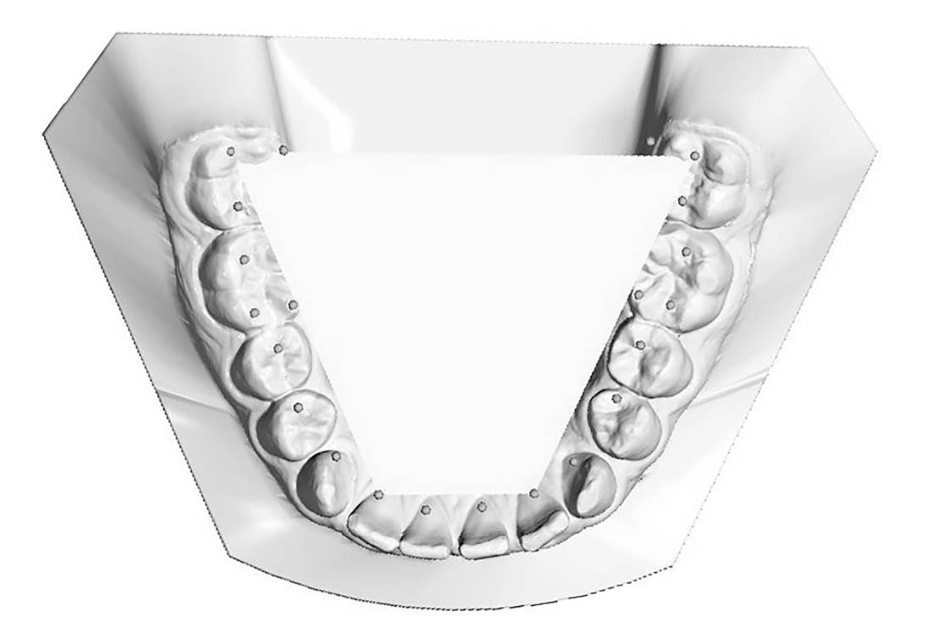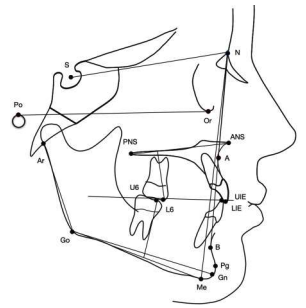Mixed dentition orthodontic treatment aims to correct dental arch irregularities and abnormalities in occlusal relations, and to eliminate functional interferences. Proper management of space in the mixed dentition can prevent unnecessary loss of arch length, allowing for beneficial use of the leeway space.
Invisalign First clear aligners (Align Technology, San Jose, CA, USA) are specifically designed to simplify the management of malocclusion in younger patients, who often present shorter clinical crowns, erupting dentition and dental arch expansion.
The present study seeks to provide indications for successful digital planning and to describe a standardised treatment protocol for maxillary development with Invisalign First. Invisalign First aligners make it possible to treat a broad range of phase 1 orthodontic problems such as anterior crowding and spacing (mild to moderate), loss of arch length due to premature loss of primary teeth and mesial drift, constricted arches (up to edge-to-edge buccal horizontal overlap), anterior reverse articulation (usually one or two teeth), midline diastemas, mild to moderate deep bite, and flared/protruded incisors. It is also possible to treat patients with a mild Class II or Class III molar relationship by rotating and distalising the molars by ~1 mm.
The clinical protocol described for phase 1 treatment with Invisalign First aligners has been designed to manage the developing occlusion, guiding the teeth into a proper maxillary arch form.
The 10 steps outlined in the present study are intended to be easy to follow during digital planning to help practitioners to deliver such predictable therapies by developing the maxillary arch using clear aligners.
Introduction
Mixed dentition orthodontic treatment aims to correct dental arch irregularities and occlusal relation abnormalities, and to eliminate functional interferences1. Two studies reported dental crowding in 38% of patients in mixed dentition; this is one of the main reasons for dissatisfaction with dental appearance and increases the desire for orthodontic correction in children or their parents2,3.
If crowding is evident in the early mixed dentition, it will not improve with further growth and development4,5. Proper management of space in mixed dentition can prevent unnecessary loss of arch length, allowing for beneficial use of the leeway space6.
Treating space problems requires an understanding of the aetiology of crowding and development of the dentition to plan treatment for mild, moderate and severe cases of crowding. Nance7 described dental crowding as a dentoalveolar discrepancy between available space (offered by bone to distribute all the teeth) and the space needed (equivalent to the mesiodistal width of all the teeth).
It is most frequently associated with Class I malocclusion, although it may be found with Class II malocclusions with maxillary protrusion and a normal skeletal pattern. The factors that influence dental crowding include the position of the permanent tooth germs, the timing of the loss of primary teeth and permanent tooth eruption, the order of replacement of the dentition from primary to permanent, soft tissue pressure, and the position of the opposite teeth8.
Clinical expression of crowding involves an abnormal alignment of teeth and anomalous dental inclination, position or rotation due to a disparity in the relationship between tooth size and jaw size9,10. Patients with dental crowding always present with narrow, tapered and irregular dental arches9. Indeed, a primary factor that often contributes to dental crowding is transverse or sagittal maxillary deficiency11.
The position of the mandibular dentition may be influenced more by the maxillary skeletal morphology than by the size and shape of the mandible as the mandibular posterior teeth have often erupted into occlusion in a more lingual orientation due to the associated constricted maxilla11. Expanding a compressed arch as a method of resolving crowding can increase arch length, providing more space for tooth alignment and improving the transverse dimension of the smile to correct dentoalveolar posterior reverse articulation12-14.
Recovering a proper buccolingual inclination of both posterior and anterior teeth is also essential to ensure stability and a proper occlusal relationship, and has a significant impact on smile aesthetics and the soft tissue profile15,16. Treating younger children with Invisalign First aligners (Align Technology, San Jose, CA, USA) can be efficient and easy, especially when seeking to obtain simultaneous dental changes.
These aligners are specifically designed to simplify the management of malocclusion in younger patients, who often present with shorter clinical crowns, erupting dentition and dental arch expansion. To improve aligner retention on teeth with short clinical crowns, new Optimized Retention attachments (Align Technology) are also available. These attachments are automatically sized and positioned based on the available buccal crown surface of the patient’s teeth.
They are highly aesthetic and well tolerated, and the fact that they can be removed for eating and brushing is appreciated by patients and their parents17. Correction of mild to moderate crowding can be managed both predictably and efficiently by following the same steps as would be taken in a rational approach to correct crowding in mixed dentition with aligners.
Thus, the present paper seeks to provide clinical indications for successful digital planning and to describe a standardised treatment protocol for maxillary development with Invisalign First.


